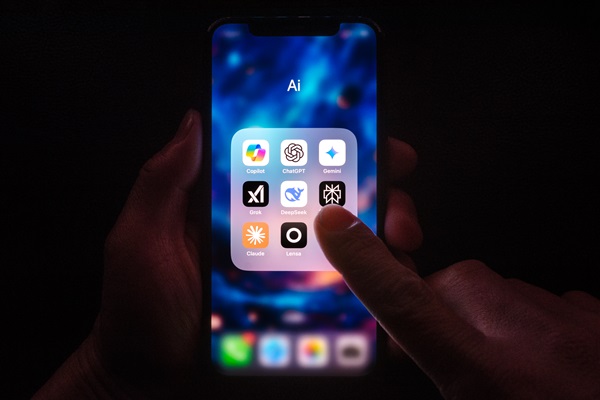.png)
Grok: Paving Way For Constructive Conversation On Generative AI Regulation
Grok has shown willingness to generate responses that other AIs would typically refuse. But it seems to mirror the tone of the user too.

Meghna is a lawyer with deep experience in media and emerging technology. Previously, she worked on legal and policy strategy at the Walt Disney Company.
April 7, 2025 at 7:29 AM IST
The advent of Grok, the AI tool integrated with the social media platform X (formerly Twitter), has ignited a global conversation, particularly in India, about the capabilities, concerns, and potential regulation of artificial intelligence. This article delves into the distinctive features of Grok, the inherent risks associated with its unfiltered nature, the complexities of content moderation, and the potential pathways for regulatory intervention.
It is unclear to what extent Grok has content guardrails in place. Users interacting with Grok have noted its willingness to generate responses that other AI systems would typically refuse due to predefined content policies.
Furthermore, Grok seems to mirror the tone of the user, responding politely to polite queries but also capable of matching impolite language – slur for slur. Another key differentiator is its near real-time access to information, unlike many other systems with knowledge cut-off dates.
While Elon Musk has presented Grok as a "truthful" and "unbiased" AI, reports indicate that the perception of Grok's unbiased nature often depends on the user's own ideological standpoint, as it may provide responses that align with their existing views. At the same time, the challenge of eliminating bias in AI is significant, with even attempts to correct for potential biases leading to unintended consequences, as seen with Google Gemini's image generation.
The adoption of a tool like Grok presents both potential benefits and risks. On the one hand, its ability to generate "hilarious" and "accurate" responses showcases the evolving capabilities of AI. As some have said, Grok offers a "revelation of what you can do with AI".
Moreover, even the tendency of AI to "hallucinate" or generate information not directly present in its training data can be beneficial in certain contexts. A good example in this regard is AlphaFold's groundbreaking work in protein folding. The unfiltered nature could potentially foster a wider range of expression and information retrieval.
The question of risks is slightly more nuanced, and depends on the context in which a generative AI system is released. The content is generated through the interaction of the AI system and the user, blurring the lines of responsibility. While online intermediaries have limited ability to control user-generated content proactively, and publishers have almost complete control over their output, generative AI systems possess a moderate ability to control content, as seen in models like ChatGPT with their content moderation policies.
However, users can often bypass these guardrails through clever prompting or "tricking" the system. This makes ex-ante rules for AI governance very challenging because the appropriateness of content is highly context-dependent.
For instance, hate speech, deemed unacceptable in a public forum, might be part of a fictional narrative in a book or screenplay.
Therefore, ex-post evaluation, often through the courts, might be a more suitable approach in many situations.
The integration of Grok with X raises complex questions of accountability for AI-generated output. Take the case involving an Air Canada chatbot that provided incorrect information to one of its customers. The customer suffered harm and the airline was held responsible and made to pay for the mistake. In other words, platforms hosting AI tools might be held liable for the information provided, regardless of whether a human or an AI generated it.
However, in India, this remains a "gray area" due to the shared role of the user and the AI in content creation. The decision-making process for regulators involves determining the extent to which Grok and similar AI systems should be treated as publishers with strict content guidelines and responsibilities, or whether a system of due diligence should be established. Ideally, regulation must accommodate different contexts and guidelines should be created to accommodate the myriad ways and purposes for which generative ai may be used. These must also be proportionate to the risk at hand.
In addition, ignoring the user element in content generation would be problematic, potentially leading to "nuisance laws" where companies are held liable even when users intentionally try to elicit harmful responses.
The implications for regulatory action are multifaceted and complex. An attempt by the Indian IT ministry last year to mandate government permissions for new AI services faced significant opposition from the industry and was quickly withdrawn, highlighting the challenges of creating balanced and effective regulations.
Concerns were raised about the legality and enforceability of such broad and strongly worded advisories, particularly the idea of a licensing regime for AI models. A key issue was the impracticality of requiring government permission for models that were inherently "unreliable" in the context of generative AI, where output is unpredictable.
It is imperative, therefore, to explore model-specific and context-specific conversations on governance, moving beyond a one-size-fits-all approach. Regulatory frameworks should learn from existing content systems while acknowledging the unique characteristics of AI technologies, such as their non-deterministic and stochastic nature.
It is crucial to avoid "homogenising" AI regulation, given the heterogeneous nature of AI technologies and their diverse deployment contexts. When considering governance, policymakers often focus on a few prominent companies, but it is essential to adopt a "whole of industry, whole of ecosystem approach", considering the potential impact on smaller companies and startups.
The Indian government's receipt of 200 applications from AI startups underscores the need for regulations that do not disproportionately burden smaller players who may lack the resources for complex compliance.
One can not overstate the need for ongoing dialogue and a nuanced understanding of the evolving landscape of AI to create effective and balanced regulatory frameworks. The path forward requires careful consultation, consideration of various contexts, and a recognition of the limitations and unique attributes of generative AI like Grok.



